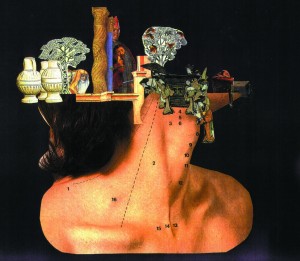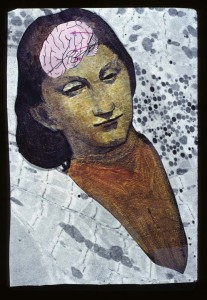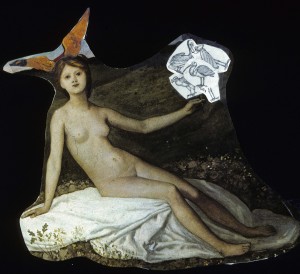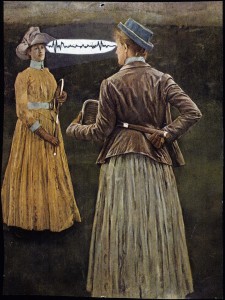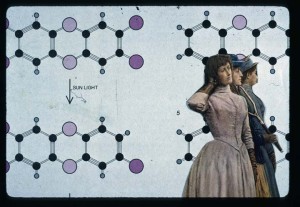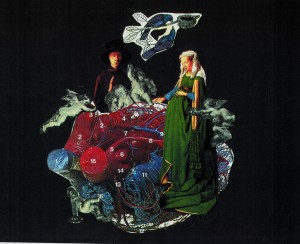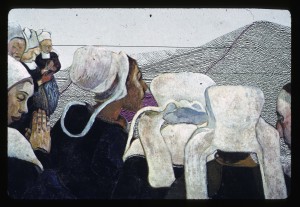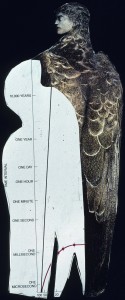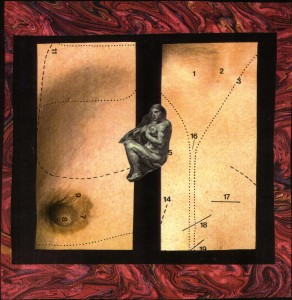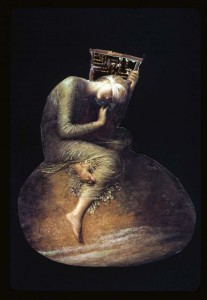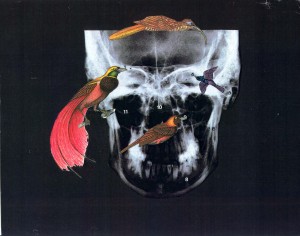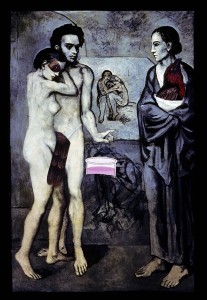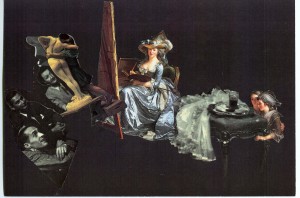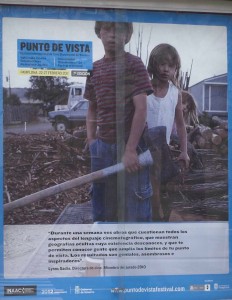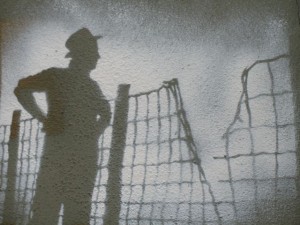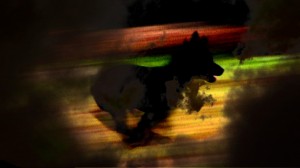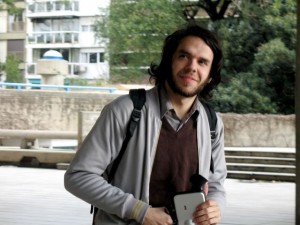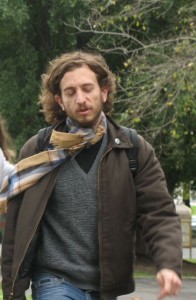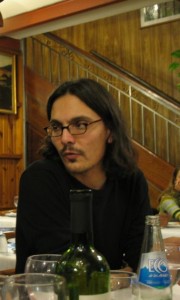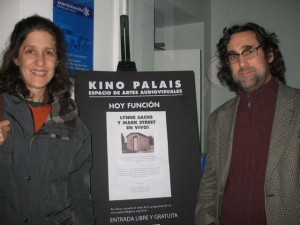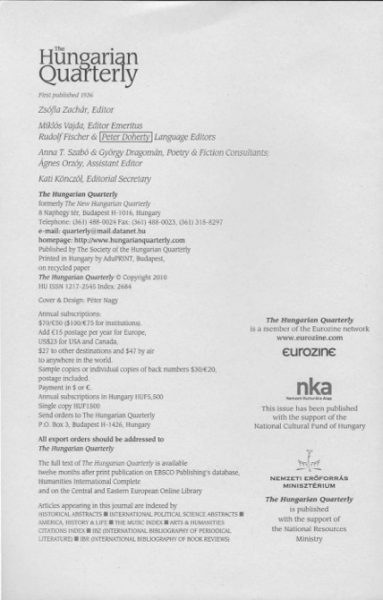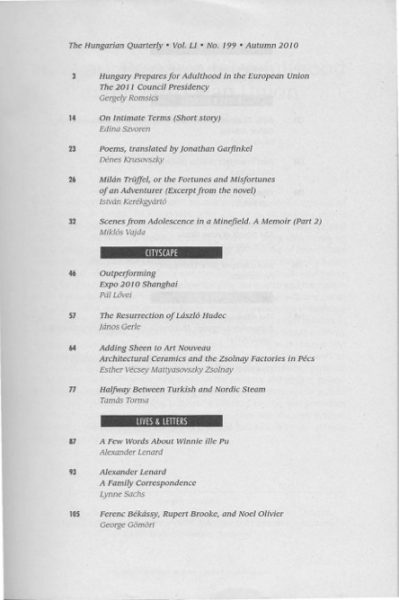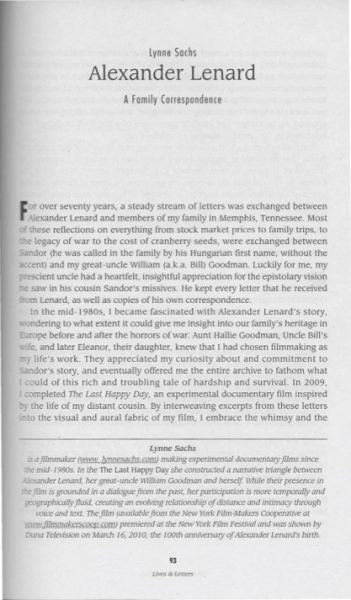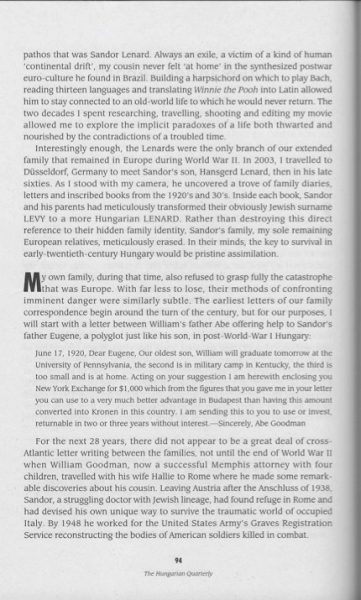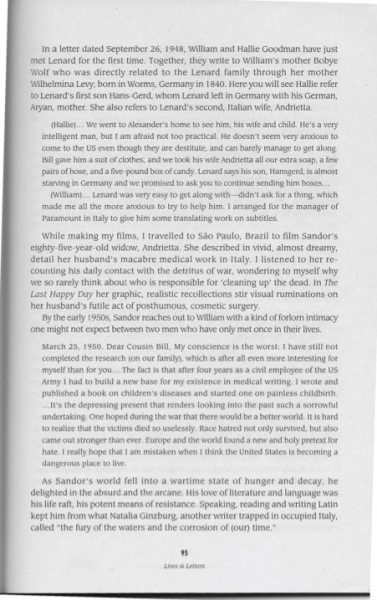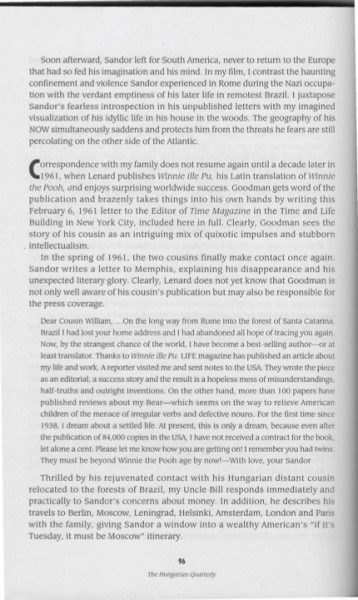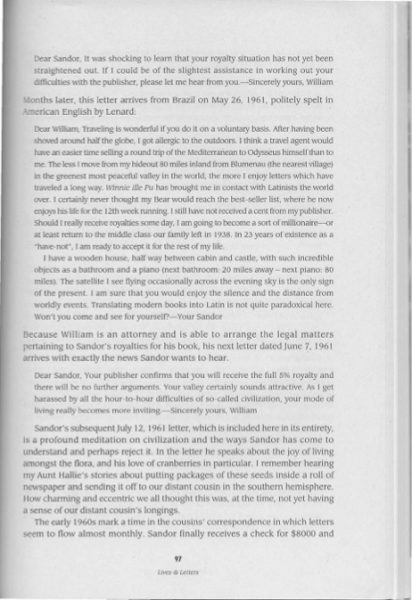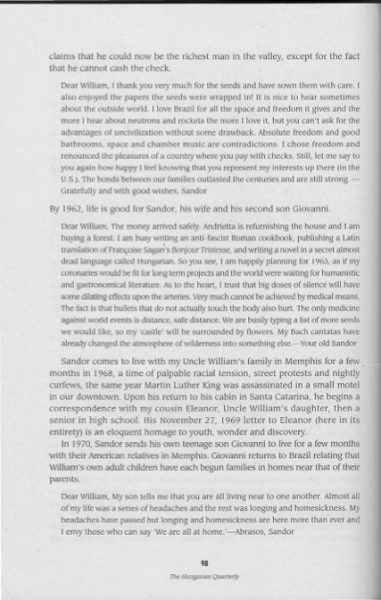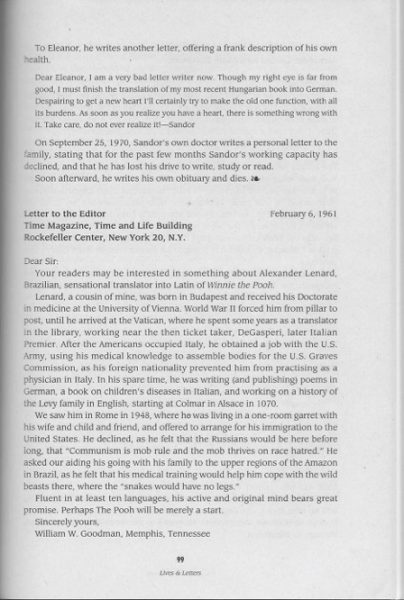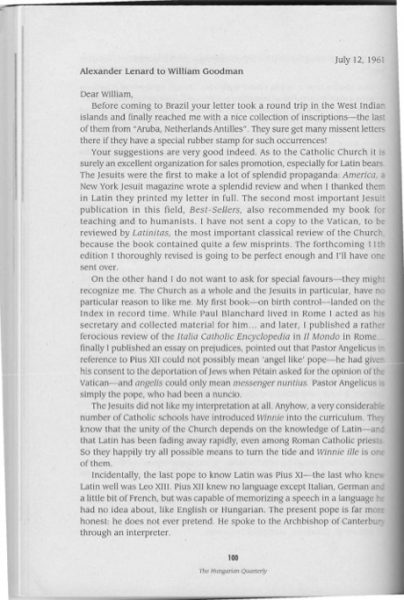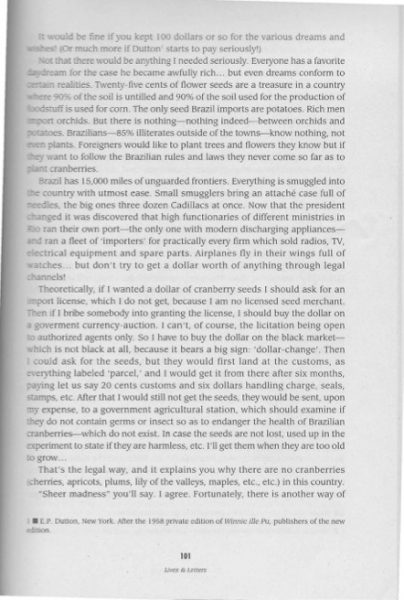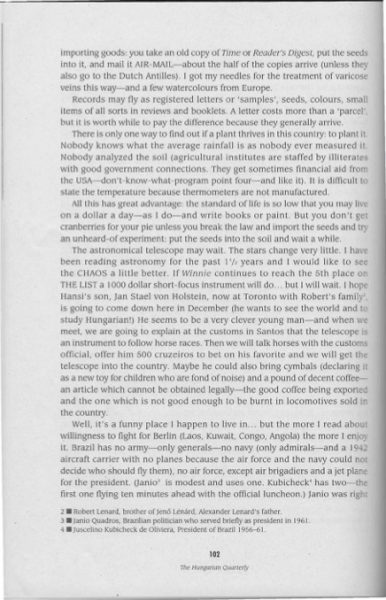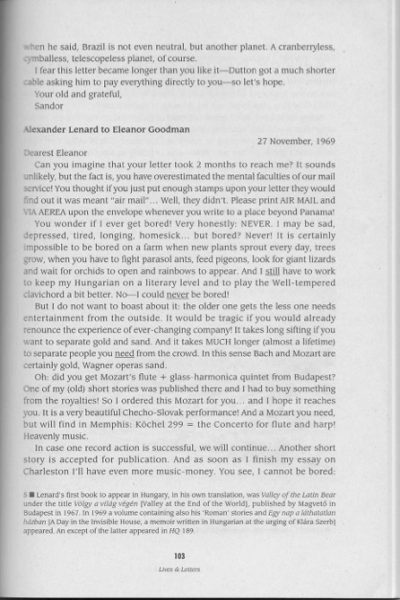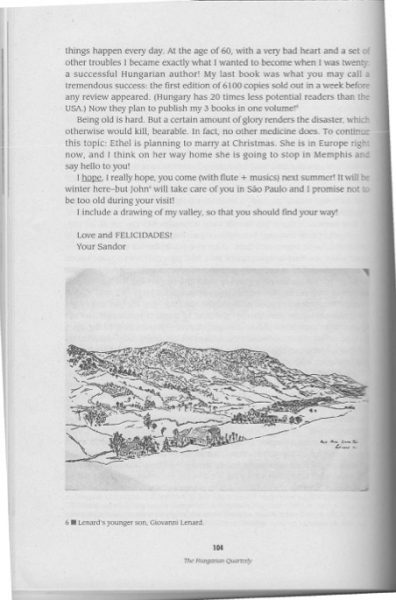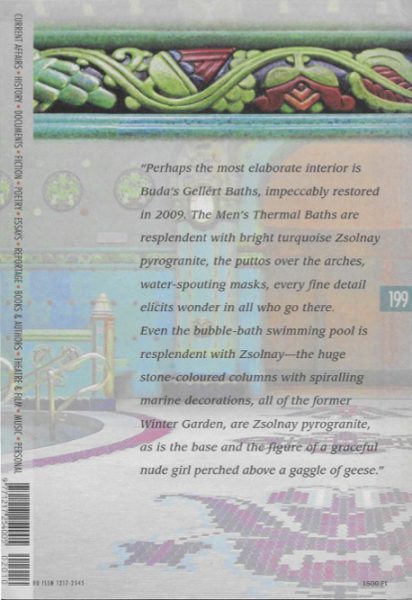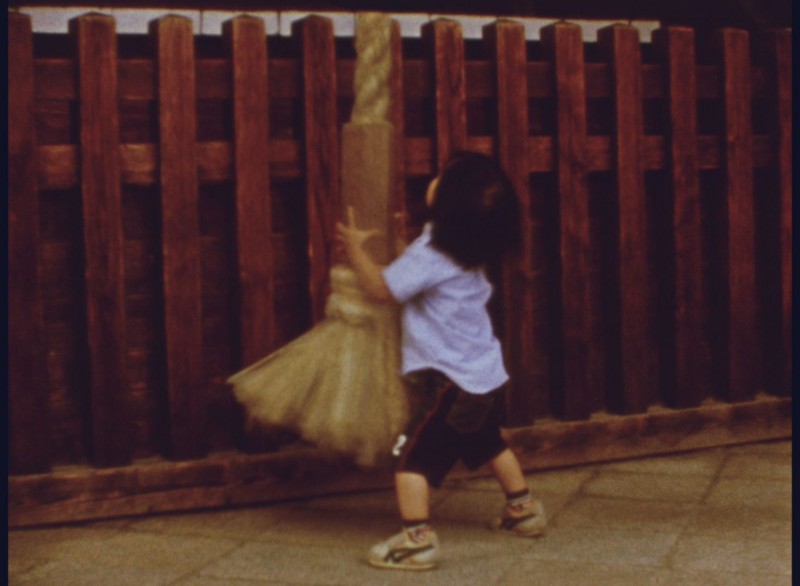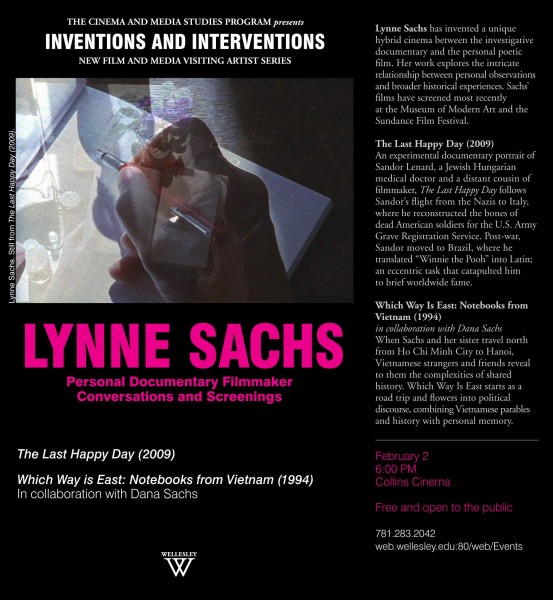Yearly Archives: 2011
Lynne at Punto de Vista Film Festival, Pamplona, Spain
Thoughts on PUNTO DE VISTA FILM FESTIVAL 2010
“Naming an international film festival after a term for subjectivity is, in my mind, a radical stance. Rather than taking the more obvious city or country identified name, which brings attention to the community, the Punto de Vista festival celebrates a first person cinema based on the documentary practice of working with reality, that privileges the expression of ideas over the dissemination of information. As a judge for the 2010 festival, I witnessed the results of this brazen decision on the part of the founders and leaders of the festival to foreground the filmmakers’ point of view. From New York City to San Francisco to Buenos Aires, I have judged approximately seven film festivals, so I feel comfortable testifying to the singularity of this body of film work as a whole. Over the course of one week, I watched work that challenged every aspect of the cinematic idiom, that showed me hidden geographies I didn’t know existed, that introduced me to people who pushed the limits of existence.. From my perspective as a filmmaker, the results were brilliant, electrifying and inspiring.”
Lynne Sachs, New York
Member of 2010 Jury
Punto de Vista Film Festival
Pamplona, Spain
An Argentine excursion: film frames, talk therapy, and ice cream
An Argentine excursion: film frames, talk therapy, and ice cream
by Mark Street and Lynne Sachs (with Pablo Marin)
Published in Otherzine Feb. 2011
http://www.othercinema.com/otherzine/?issueid=25&article_id=129
In 2008, we packed our bags, got on a plane and moved to Buenos Aires for two months, studying Spanish as a family (with our two preteen daughters), shooting film and diving even deeper into the experimental film scene. We learned to speak Argentine Spanish (the “y” sound is pronounced “j”, so “Yo” becomes “Jo” and “pollo” become “pojo”), eat dinner late and spend hours sobremesa (at table) chatting and sipping wine into the night. This land can make you busy New Yorkers feel impatient and shallow, as the Argentine filmmakers we met seemed to relish spending time discussing their movies as well as the political issues of the day (multiple agricultural protests) in Europeanist distended style. Maybe it comes from the Argentine their obsession with psychoanalysis, but talk is not considered passé in Argentina.here.
Our apartment was near the Museo d’Arte Latino Buenos Aires (MALBA) where we relished the best modern art collection in town, as well as a full film schedule. We saw a Hugo Fregonese retrospective, as well as the hilarious campy ¨Esperando la Carroza¨ by Juan Carlos Lenardi which friends had recommended. What a way to learnas a way to learn Spanish, through the movies. It’s like Imagine learning English by watching “The Rocky Horror Picture Show.”
A lynchpin of the scene is the urbane and witty Ruben Guzman. A prolific filmmaker and programmer, Ruben had moved to Canada in the 80’s but recently returned to make work and program in Buenos Aires. The Kino Palais at the Palais de Glace shows 4 nights a week in a cavern-like space in the back of the museum. It’s an underground club hidden in a 19th century ice skating rink (no kidding). This is where we presented our X-Y Chromosome Project , a subjective take on global warming, to the Buenos Aires community for three nights, the same program we presented at Other Cinema, slightly adapted to a Spanish-speaking audience. Here’s what they saw:
“From archival snips of an educational film on the weather to cine poems in full blossom, New York film ‘avant-gardeners” Mark Street and Lynne Sachs present the XY CHROMOSOME PROJECT .This program of 10 short films on both single and double screen gleans audio-visual crops from the dust of the filmmakers’ fertile and fallow imaginations. In this avalanche of visual ruminations on nature’s topsy-turvy shakeup of our lives, Street and Sachs ponder a city child’s tentative excavation of the urban forest, winter wheat, and the great American deluge of the 21st Century (so far).”
Over Peruvian dinner, Ruben introduced us to Federico Windhausen, an Argentine-American media arts historian currently living in Oakland and teaching at the California College of the Arts. Windhausen is a man whose Argentine roots run deep. He is the best informal cultural guide we’ve ever encountered, anywhere, constantly suggesting film screenings, theatre and dance pieces (in the plaza of the Biblioteca Nacional, for instance) and ice cream (helado) places. The Argentine obsession with ice cream is legendary. Ice cream is a legendary obsession with Argentines. Once at an asado (barbecue) in the countrysuburbs, the conversation wound its way from politics to movies to children’s attributes with nary a raised voiceconflict. When it came time to ordering helados though however, the guests argued vehemently and passionately in defense of their favorite flavors.
Whenever we found the conversation turning to the subject of Argentine experimental film there was one name that never failed to come up: Narcisa Hirsch. Over the last forty years, this grand dame of South American cinema has earned a well deserved reputation for making extraordinary films that are both formally rigorous and deeply personal. Inspired by the feminists and the Fluxus artists she met and worked with in Europe in the 1960s and ‘70’s (including renowned artist Carolee Schneemann), Narcisa brought back her profound appreciation for North American avant-garde film to the artists’ community she knew and loved in Buenos Aires. In the company of her good friend Ruben and Paula Felix-Didier, the director of the Museo de Cine, Lynne spent was fortunate to spend a fascinating afternoon with Narcisa in her home-studio discussing her forty year filmmaking career, her children and grandchildren and her farm in Bariloche, in the south of Argentina.
Pablo Marin is one of the guiding forces of experimental cinema in Buenos Aires, and his blog La Region Central (title taken from the Michael Snow film) is an amazing living document. (http://laregioncentral.blogspot.com/)
Once Pablo and we (sans Lynne) spent the hour just before dusk shooting 16mm film around some stands that sell meat and sausages right next to the Reserva Ecologica. Later Mark and hewe drank beers in a café on the Avenida Corrientes (sort of the psychic artery of the city). Mark asked him to give a quick historical overview of the past.
“The early Argentine experimental period is represented by just a bunch of separate films, made by filmmakers that didn’t pursue a total exploration of the medium and, most importantly, didn’t think in terms of a community or movement. Horacio Coppola, a leading name in Argentinian still photography, made a few films during the 1920s and ‘30s. His most important is “Traum”, a 16mm film that reminds me of the French-German Surrealists.
“Víctor Iturralde and Luis Bras were a couple of pioneers of experimental animation in the ‘50s and ‘60s. They mostly painted and scratched on celluloid films in 35mm, 16mm and Super 8mm.
“The 1970s and 80s were a strong and vital period for experimental film in Argentina. An actual alternative film community was born. During the 70s, we experienced a military coup d’etat which resulted in little contact with the experimental film world abroad. Our productions were more scarce and individualized. Many films were made (mostly all in 8mm and Super 8) but the conditions of exhibition were totally underground and unconnected (garages, houses, etc). All this began to change in the early 80s when Buenos Aires’ Goethe Institute began showcasing as well as protecting these films and filmmakers. Under the Goethe’s umbrella (to put it visually), this kind of film practice could grow without fear of persecution (that’s why the government reaction was never that intense) and with more support for the movement collectively. The highest point of this Goethe period (if one could call it that) was in 1980, when the Institute held a workshop of experimental film with German filmmaker Werner Nekes. In this period many artists were working, such as Claudio Caldini (Super 8, Single 8), Narcisa Hirsch (16mm, Super 8) and Jorge Honik (Super 8). Other names include Juan Villola, Horacio Vallereggio, Marie Louise Alemann, Juan José Mugni and Silvestre Byrón. The films where shown in bigger, more social, environments but the reaction of the audience was mostly hostile. Once at a screening of Caldini’s “Gamelan” the audience started booing and shouting and turning off and on the lights ! It is also important to note that in this period these filmmakers were more in touch with international, experimental film production. To name a few screenings, there’ was Jonas Mekas’ 1962 screening of “Guns of the Trees” at Mar del Plata Film Fest and in 1965 the Di Tella Art Institut screened a bunch of New American films (Mekas, Brakhage, Warhol, etc.). Besides that, Narcisa Hirsch traveled a lot to buy film prints that even today represent the most important private, experimental film archive in Buenos Aires.
“Since 1990, experimental media has for the most part switched drastically towards video even though makers such as Caldini and Hirsch continue to produce films. The opening of several film schools makes experimental film more accessible and more studied. The public screenings of international works have gained a solid following mainly through Buenos Aires Independent Film Festival and Mar del Plata, and it is also more common to see screenings of local experimental works at these venues. Some of the important names are: Andres Denegri, Gustavo Galuppo, Gabriela Golder, Ruben Guzman (all in video), Daniela Cugliandolo (Super 8, video) and Sergio Subero (Super 8, video).”
With this backdrop for experimental film all around us, we tried to let ourselves become charged as artists inwith the poetry Buenos Aires, too, and move ahead with our own work. Mark shot 16mm film and videotape attempting to capture the idiosyncrasy of the city, following up on his film “Hidden in Plain Sight” (a city symphony film shot in Dakar, Hanoi, Marseille and Santiago de Chile). He became obsessed with the cartonieres, the gleaners who sift through trash to sell cardboard on the outskirts of town, and the portreros, the men who sit behind glass windows at middle class apartment buildings watching and waiting. He is currently editing the project, tentatively titled “Fans of Argentina”(based on the store displays that feature industrial fans running at different speeds, like enormous film shutters).
While making her most recent film, “Wind in Our Hair” (Con Viento en el Pelo), Lynne worked with With Argentine super 8 filmmakers Leandro Listorti, Pablo Marin and Tomas Dota., Lynne shot “Wind in Our Hair” is , an experimental narrative inspired by Julio Cortazar’s short story “Final del Juego” about four girls (our daughters Maya and Noa and their two Argentine friends Lena and Chiara Peroni) who stand by a passing train everyday posing like “sculptures and attitudes.” The film is very much about longing, the rite of passage between childhood and adulthood, and performance of an inner self. The crew of cinema friends shot with a real potpourri of formats – from obsolete Kodak Regular 8 to Super 8mm, 16mm and video. Our daughters Maya and Noa and their two Argentine friends Lena and Chiara Peroni were hopping on and off trains throughout the summer as part of the production. The film used the entire city as a set – including the Tigre Train line that sweeps through the Parque Palermo, the majestic Retiro train station, the flea market in San Telmo’s Plaza Dorrego, and a quiet backyard on the outskirts of the city. “Wind in Our Hair” film had its Bay Area premiere at Other Cinema in April of 2010.
Our last day in Buenos Aires we walked a few blocks to a huge multiplex and caught Lucretia Martel’s brandnew “La Mujer Sin Cabeza” while our kids took in a dubbed version of “Mamma Mia” at the screen next door. As we munched a last alfajore walking back to the apartment to collect our security deposit we came up with the idea of curating a film screening in NYC upon our return.
Six months later, on February 21, 2009, we showed thirteen Super 8, video and 35mm films from Argentina at Anthology Film Archives in New York City. In curating “Ventana al Sur: An Evening of Argentine Experimental Film” we culled films from a whole array of non-traditional works made over the last 3 decades, some by veteran masters and mistresses (Leandro Katz, Liliana Porter and Narcisa Hirsch) and some by young upstarts and renegades (Pablo Marin, Ruben Guzman, Macarena Gagliardi, Sergio Subero, Leandro Listordi, Ernesto Baca) with newfound passions for the moving image. Here are descriptions of just a few of the works we showed:
Leandro Katz’s “Los Angeles” (5 min., 16mm, 1976) is a portrait of a small community living by the railroad tracks in the banana plantation region of Quiriguá, Guatemala. Originally a single take, this film alternates equal number of moving frames and frozen frames as the camera tracks alongside the train station.
Narcisa Hirsch’s “Workshop” (10 min.,16mm 1977) is a structuralist vision. One wall of the filmmaker’s studio as seen through a fixed camera. We see photos she’s stuck on the wall, then there is a dialogue with a male friend to whom she is describing the rest of the walls that you don’t see. A “one upmanship” of a similar film by Michael Snow where he describes a wall of his studio- workshop, by describing what one CAN see.
“Bajo Tierra” (4 1/2 min., Super 8, sound on CD, 2007) is Pablo Marin’s portrait of filmmaker Claudio Caldini who makes a new cinematic offering in front of the no-longer-industrialized Kodachrome.
In “Montevideo” (4 minutes, DVD, 2008) Leandro Listorti looks at the capital of Uruguay reveals, briefly, its characteristic of a Doppelgänger City: a single place cut in two spaces where two pairs of creatures explore the limits of the travelogue.
In “Stock” (5 minutes, 2007, mini DV ) Ruben Guzman follows a boy from La Cruz who walks to school to read aloud the stock market report from the newspaper. We are witness to the last day of capitalism.
Ernesto Baca’s “Nunca Fuimos Allah Luna” (7 min., 35mm, 2008) presents two characters on split screens, conversing and arguing as the city unspools kinetically behind them.
The show was packed with Argentine expats, curiosity seekers, and hard core experimentalists who wanted to see how subversive cinematic effusions looked from the land where summer is winter and winter is summer. Since we had some of our first and best film dates at Other Cinema in the early 1990s when we were denizens of the Mission District, we tried to recreate that kind of informal, bon vivant celebration of the senses and the screen here in downtown Manhattan. We served yerba mate from communal gourds at the show—there’s no caffeine in mate, but there is something in there, and the room seemed to float on the wings of a filmic reverie. We also served sweet dessert churros (filled with dulce de leche of course) purchased at the famous Buenos Aires Bakery in Queens. In 2009, we presente this program at the Pacific Film Archive along with an excerpt Federico Windhausen’s “When the Pueblo Was Hollywood”.
On our way home to Brooklyn, we played back images from the screen in our heads—the frantic single frame pace of Narcisa Hirsch’s “Aleph”, the wry and witty animated vignettes of Liliana Porter’s “Para Usted/For You” and the truncated urban space of Pablo Marin’s “Sin Titulo”, shot on an apartment building roof in Buenos Aires. As distinctive as New York is, it also recalls other cities, in a similar way that Buenos Aires can seem like Paris or Madrid, refracted, if you squint your eyes just right. As revelers ducked in and out of bars at 11 pm, it felt as if an Argentine night was just beginning.
In 2009, the Pacific Film Archive presented out “Ventana al Sur” program in Berkeley along with an excerpt from Federico Windhausen’s “When the Pueblo Was Hollywood”, a film he shot in the north of Argentina. Lucky for us and the Bay Area audience, Windhausen was able to be there for the show to field questions on Argentina Cinema, a topic on which he, like us, is passionate.
Alexander Lenard: A Life in Letters by Lynne Sachs in Hungarian Quarterly
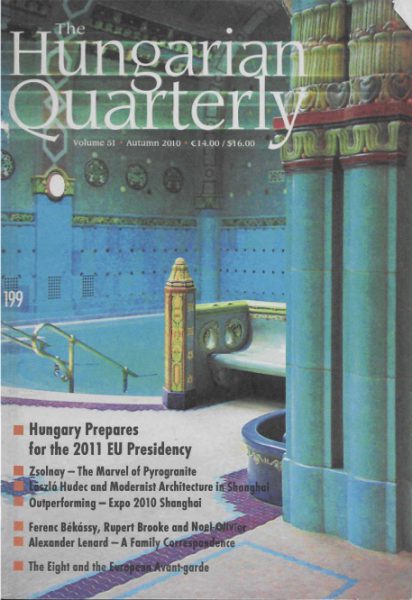
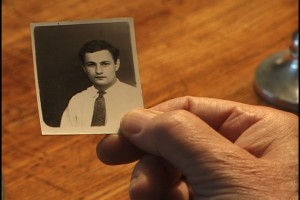
Alexander Lenard: A Life in Letters
by Lynne Sachs
Published in The Hungarian Quarterly VOLUME LI * No. 199 * Autumn 2010
http://www.hungarianquarterly.com
For over seventy years, a steady stream of letters was exchanged between Alexander Lenard and members of my family in Memphis, Tennessee. Most of these reflections on everything from stock market prices to family trips, to the legacy of war to the cost of cranberry seeds, were exchanged between Sandor (he was called in the family by his Hungarian first name, without the accent) and my great-uncle William (a.k.a. Bill) Goodman. Luckily for me, my prescient uncle had a heart-felt, insightful appreciation for the epistolary vision he saw in his cousin Sandor’s missives. He kept every letter that he received from Lenard, as well as copies of his own correspondence.
In the mid-1980s, I became fascinated with Alexander Lenard’s story, wondering to what extent it could give me insight into our family’s heritage in Europe before and after the horrors of WWII. Aunt Hallie Goodman, Uncle Bill’s wife, and later Eleanor, their daughter, knew that I had chosen filmmaking as my life’s work. They appreciated my curiosity about and commitment to Sandor’s story and eventually offered me the entire archive to fathom what I could of this rich and troubling tale of hardship and survival. In 2009, I completed The Last Happy Day, an experimental documentary film inspired by the life of my distant cousin.
By interweaving excerpts from these letters into the visual and aural fabric of my film, I embrace the whimsy and the pathos that was Sandor Lenard. Always an exile, a victim of a kind of human “continental drift”, my cousin never felt “at home” in the synthesized post-war euro-culture he found in Brazil. Building a harpsichord on which to play Bach, reading thirteen languages and translating Winnie the Pooh into Latin allowed him to stay connected to an old-world life to which he would never return. The two decades I spent researching, traveling, shooting and editing my movie allowed me to explore the implicit paradoxes of a life both thwarted and nourished by the contradictions of a troubled time.
Interestingly enough, the Lenards were the only branch of our extended family that remained in Europe during World War II. In 2003, I travelled to Düsseldorf, Germany to meet Sandor’s son, Hansgerd Lenard, then in his late sixties. As I stood with my camera, he uncovered a trove of family diaries, letters and inscribed books from the 1920’s and 30’s. Inside each book, Sandor and his parents had meticulously transformed their obviously Jewish surname LEVY to a more Hungarian LENARD. Rather than destroying this direct reference to their hidden family identity, Sandor’s family, my sole remaining European relatives, meticulously erased. In their minds, the key to survival in early twentieth century Hungary would be pristine assimilation.
My own family, during that time, also refused to grasp fully the catastrophe that was Europe. With far less to lose, their methods of confronting imminent danger were similarly subtle. The earliest letters of our family correspondence begin around the turn of the century, but for our purposes, I will start with a letter between William’s father Abe offering help to Sandor’s father Eugene, a polyglot just like his son, in post-World-War I Hungary:
June 17, 1920, Dear Eugene: Our oldest son, William will graduate tomorrow at the University of Pennsylvania, the second is in military camp in Kentucky, the third is too small and is at home. Acting on your suggestion I am herewith enclosing you New York Exchange for $1,000.00 which from the figures that you gave me in your letter you can use to a very much better advantage in Budapest, than having this amount converted into Kronen in this country. I am sending this to you to use or invest, returnable in two or three years without interest.
Sincerely, Abe Goodman
For the next 28 years, there did not appear to be a great deal of cross-Atlantic letter writing between the families, not until the end of World War II when William Goodman, now a successful Memphis attorney with four children, traveled with his wife Hallie to Rome where he made some remarkable discoveries about his cousin. During World War II, Sandor , a struggling doctor with Jewish lineage, had found refuge in Rome and had devised his own unique way to survive the traumatic world of occupied Italy. By 1948 he worked for the United States Army’s Graves Registration Service reconstructing the bodies of American soldiers killed in combat.
In a letter dated September 26, 1948, William and Hallie Goodman have just met Lenard for the first time. Together, they write to William’s mother Bobye Wolf who was directly related to the Lenard family through her mother Wilhelmina Levy, born in Worms, Germany in 1840. Here you will see Hallie refer to Lenard’s first son whom Lenard left in Germany with his German, Aryan, mother. She also refers to Lenarad’s second, Italian wife, Andrietta.
(Hallie) We went to Alexander’s home to see him, his wife and child. He’s a very intelligent man, but I am afraid not too practical. He doesn’t seem very anxious to come to the US even though they are destitute, and can barely manage to get along. Bill gave him a suit of clothes, and we took his wife Andrietta all our extra soap, a few pairs of hose, and a five-pound box of candy. Lenard says his son, Hansgerd, is almost starving in Germany and we promised to ask you to continue sending him boxes.
(William) Lenard was very easy to get along with –didn’t ask for a thing, which made me all the more anxious to try to help him. I arranged for the manager of Paramount in Italy to give him some translating work on subtitles.”
While making my films, I travelled to Sao Paolo, Brazil to film Sandor’s eighty-five-year-old wife, Andrietta. She described in vivid, almost dreamy, detail her husband’s macabre, medical work. I listened to her recounting his daily contact with the detritus of war, wondering to myself why we so rarely think about who is responsible for “cleaning up” the dead. In The Last Happy Day her graphic, realistic recollections stir visual ruminations on her husband’s futile act of posthumous, cosmetic surgery.
By the early 1950s, Sandor reaches out to William with a kind of forlorn intimacy one might not expect between two men who have only met once in their lives
March 25, 1950. Dear Cousin Bill, My conscience is the worst: I have still not completed the research (on our family), which is after all even more interesting for myself than for you… The fact is that after four years as a civil employee of the US Army I had to build a new base for my existence in medical writing. I wrote and published a book on children’s diseases and started one on painless childbirth. ….It’s the depressing present that renders looking into the past such a sorrowful undertaking. One hoped during the war that there would be a better world. It is hard to realize that the victims died so uselessly. Race hatred not only survived, but also came out stronger than ever. Europe and the world found a new and holy pretext for hate. I really hope that I am mistaken when I think the United States is becoming a dangerous place to live.
As Sandor’s world fell into a wartime state of hunger and decay, he delighted in the absurd and the arcane. His love of literature and language was his life raft, his potent means of resistance. Speaking, reading and writing Latin kept him from what Natalie Ginzburg, another writer trapped in occupied Italy, called “the fury of the waters and the corrosion of (our) time.”
Soon afterward, Sandor left for South America, never to return to the Europe that had so fed his imagination and his mind. In my film, I contrast the haunting confinement and violence Sandor experienced in Rome during the Nazi occupation with the verdant emptiness of his later life in remotest Brazil. I juxtapose Sandor’s fearless introspection in his unpublished letters with my imagined visualization of his idyllic life in his house in the woods. The geography of his NOW simultaneously saddens and protects him from the threats he fears are still percolating on the other side of the Atlantic.
Correspondence with my family does not resume again until a decade later in 1961, when Lenard publishes Winnie Ille Pu, his Latin translation of Winnie the Pooh, and enjoys surprising worldwide success. Goodman gets word of the publication and brazenly takes things into his own hands by writing this Feb. 6, 1961 letter to the Editor of Time Magazine in the Time and Life Building in New York City. Clearly, Goodman sees the story of his cousin as an intriguing mix of quixotic impulses and stubborn intellectualism.
In the spring of 1961, the two cousins finally make contact once again. Sandor writes a letter to Memphis, explaining his disappearance and his unexpected literary glory. Clearly, Lenard does not yet know that Goodman is not only well aware of his cousin’s publication but may also be responsible for the press coverage.
Dear Cousin William, ….On the long way from Rome into the forest of Santa Catarina, Brazil I had lost your home address and I had abandoned all hope of tracing you again. Now, by the strangest chance of the world, I have become a best-selling author – or at least translator. Thanks to Winnie Ille Pu. LIFE magazine has published an article about my life and work. A reporter visited me and sent notes to the USA. They wrote the piece as an editorial, a success story and the result is a hopeless mess of misunderstandings, half-truths and outright inventions. On the other hand, more than 100 papers have published reviews about my Bear – which seems on the way to relieve American children of the menace of irregular verbs and defective nouns. For the first time since 1938, I dream about a settled life. At present, this is only a dream, because even after the publication of 84,000 copies in the USA, I have not received a contract for the book, let alone a cent. Please let me know how you are getting on! I remember you had twins. They must be beyond Winnie the Pooh age by now! With love, your Sandor
Thrilled by his rejuvenated contact with his Hungarian distant cousin relocated to the forests of Brazil, my Uncle Bill responds immediately and practically to Sandor’s concerns about money. In addition, he describes his travels to Berlin, Moscow, Leningrad, Helsinki, Amsterdam, London and Paris with the family, giving Sandor a window into a wealthy American’s “if it’s Tuesday, it must be Moscow” itinerary.
Dear Sandor, It was shocking to learn that your royalty situation has not yet been straightened out. If I could be of the slightest assistance in working out your difficulties with the publisher, please let me hear from you. Sincerely yours, William
Months later, this letter arrives from Brazil on May 26, 1961, politely spelt in American English by Lenard:
Dear William, Traveling is wonderful if you do it in a voluntary basis. After having been shoved around half the globe, I got allergic to the outdoors. I think a travel agent would have an easier time selling a round trip of the Mediterranean to Odysseus himself than to me. The less I move from my hideout 80 miles inland from Blumenau (the nearest village) in the greenest most peaceful valley in the world, the more I enjoy letters which have traveled a long way. Winnie Ille Pu has brought me in contact with Latinists the world over. I certainly never thought my Bear would reach the best-seller list, where he now enjoys his life for the 12th week running. I still have not received a cent from my publisher. Should I really receive royalties some day, I am going to become a sort of millionaire – or at least return to the middle class our family left in 1938. In 23 years of existence as a “have-not”, I am ready to accept it for the rest of my life.
I have a wooden house, half way between cabin and castle, with such incredible objects as a bathroom and a piano (next bathroom: 20 miles away – next piano: 80 miles). The satellite I see flying occasionally across the evening sky is the only sign of the present. I am sure that you would enjoy the silence and the distance from worldly events. Translating modern books into Latin is not quite paradoxical here. Won’t you come and see for yourself? Your Sandor”
Because William is an attorney and is able to arrange the legal matters pertaining to Sandor’s royalties for his book, his next letter dated June 7, 1961 arrives with exactly the news Sandor wants to hear.
Dear Sandor, Your publisher confirms that you will receive the full 5% royalty and there will be no further arguments. Your valley certainly sounds attractive. As I get harassed by all the hour-to-hour difficulties of so-called civilization, your mode of living really becomes more inviting. Sincerely yours, William
Sandor’s subsequent July 12, 1961 letter, which is included here in its entirety, is a profound meditation on civilization and the ways Sandor has come to understand and perhaps reject it. In the letter he speaks about the joy of living amongst the flora, and his love of cranberries in particular. I remember hearing my Aunt Hallie’s stories about putting packages of these seeds inside a roll of newspaper and sending it off to our distant cousin in the southern hemisphere. How charming and eccentric we all thought this was, at the time, not yet having a sense of our distant cousin’s longings.
The early 1960s mark a time in the cousins’ correspondence in which letters seem to flow almost monthly. Sandor finally receives a check for $8000 and claims that he could now be the richest man in the valley, except for the fact that he cannot cash the check.
Dear William, I thank you very much for the seeds and have sown them with care. I also enjoyed the papers the seeds were wrapped in! It is nice to hear sometimes about the outside world. I love Brazil for all the space and freedom it gives and the more I hear about neutrons and rockets the more I love it, but you can’t ask for the advantages of uncivilization without some drawback. Absolute freedom and good bathrooms, space and chamber music are contradictions. I chose freedom and renounced the pleasures of a country where you pay with checks. Still, let me say to you again how happy I feel knowing that you represent my interests up there (in the U.S.). The bonds between our families outlasted the centuries and are still strong. Gratefully and with good wishes, Sandor
By 1962, life is good for Sandor, his wife and his second son Giovanni.
Dear William, The money arrived safely. Andrietta is refurnishing the house and I am buying a forest. I am busy writing an anti-fascist Roman cookbook, publishing a Latin translation of Francoise Sagan’s Bonjour Tristesse, and writing a novel in a secret almost dead language called Hungarian. So you see, I am happily planning for 1963, as if my coronaries would be fit for long term projects and the world were waiting for humanistic and gastronomical literature. As to the heart, I trust that big doses of silence will have some dilating effects upon the arteries. Very much cannot be achieved by medical means. The fact is that bullets that do not actually touch the body also hurt. The only medicine against world events is distance, safe distance. We are busily typing a list of more seeds we could like, so my ‘castle’ will be surrounded by flowers. My Bach cantatas have already changed the atmosphere of wilderness into something else. Your old Sandor
Sandor comes to live with my Uncle William’s family in Memphis for a few months in 1968, a time of palpable racial tension, street protests and nightly curfew, the same year Martin Luther King was assassinated in a small motel in our downtown. Upon his return to his cabin in Santa Catarina, he begins a correspondence with my cousin Eleanor, Uncle William’s daughter, then a senior in high school. His November 27, 1969 letter to Eleanor (here in its entirety) is an eloquent homage to youth, wonder and discovery.
In 1970, Sandor sends his own teenage son Giovanni to live for a few months with their American relatives in Memphis. Giovanni returns to Brazil relating that William’s own adult children have each begun families in homes near that of their parents.
Dear William, My son tells me that you are all living near to one another. Almost all of my life was a series of headaches and the rest was longing and homesickness. My headaches have passed but longing and homesickness are here more than ever and I envy those who can say ‘We are all at home.’ Abrasos, Sandor
To Eleanor, he writes another letter, offering a frank description of his own health.
Dear Eleanor, I am a very bad letter writer now. Though my right eye is far from good, I must finish the translation of my most recent Hungarian book into German. Despairing to get a new heart I’ll certainly try to make the old one function, with all its burdens. As soon as you realize you have a heart, there is something wrong with it. Take care, do not ever realize it! Sandor
On September 25, 1970, Sandor’s own doctor writes a personal letter to the family, stating that for the past few months Sandor’s working capacity has declined, and that he has lost his drive to write, study or read.
Soon afterward, he writes his own obituary and dies.
Lynne Sachs (www.lynnesachs.com)
is a filmmaker making experimental documentary films since the mid-1980s. In the The Last Happy Day she constructed a narrative triangle between Lenard, her Uncle William and herself. While their presence in the film is grounded in a dialogue from the past, her participation is more temporally and geographically fluid, creating an evolving relationship of distance and intimacy through voice and text. The film (available from the New York Film-makers Cooperative at www.film-makerscoop.com) premiered at the New York Film Festival and was shown by Duna Television on March 16, 2010, the 100th anniversary of Lenard’s birth.
Sound of a Shadow
“Sound of a Shadow”
10 min., Super 8 , color, sound 2011
by Mark Street and Lynne Sachs
A wabi sabi summer in Japan – observing that which is imperfect, impermanent and incomplete– produces a series of visual haiku in search of teeming street life, bodies in emotion, and leaf prints in the mud.
Black Maria Film Festival, Director’s Choice, 3rd Prize. 2011
For inquiries about rentals or purchases please contact Canyon Cinema or the Film-makers’ Cooperative. And for international bookings, please contact Kino Rebelde.
Lynne Sachs at Wellesley College Collins Cinema Feb. 2, 2010 in Boston
The Cinema and Media Studies Program presents “Inventions and Interventions,” the New Film and Media Visiting Artist Series.
https://issuu.com/wellesley/docs/artscalendarsp11
Lynne Sachs has invented a unique hybrid cinema between the investigative documentary and the personal poetic film. Her work explores the intricate relationship between personal observations and broader historical experiences Sachs’ films have screened most recently at the Museum of Modern Art and the Sundance Film Festival.
On Feb. 2, at 6 PM – two films and a conversation with Sachs, co-sponsored by the Davis Museum and the Art Department.
The Last Happy Day (2009)
An experimental documentary portrait of Sandor Lenard, a Jewish Hungarian medical doctor and a distant cousin of the filmmaker, The Last Happy Day follows Sandor’s flight from the Nazis to Italy, where he reconstructed the bones of dead American soldiers for the U.S. Army Grave Registration Service. Post-war, Sandor moved to Brazil, where he translated Winnie the Pooh into Latin, an eccentric task that catapulted him to brief worldwide fame.
Which Way Is East: Notebooks from Vietnam (1994)
When Sachs and her sister Dana Sachs travel north from Ho Chi Minh City to Hanoi, Vietnamese strangers and friends reveal to them the complexities of shared history. Which Way Is East starts as a road trip and flower into political discourse, combining Vietnamese parables and history with personal memory.
Inventions and Interventions is a monthly series that will present a diverse range of international acclaimed film and media makers who are redefining the art of cinema and contemporary media in the 21st century.
Collins Cinema
Davis Museum and Cultural Center
Wellesley College
106 Central Street
Wellesley, MA 02481-8203
Telephone: 781.283.2051
Con viento en el pelo de Lynne Sachs
Con viento en el pelo
40 min., 2010
Inspirada en los cuentos cortos de Julio Cortázar, aunque combinada con las realidades contemporáneas de Argentina, Con viento en el pelo (Wind in Our Hair) es una narrativa experimental sobre cuatro niñas que se descubren a través de una fascinación con los trenes que pasan por su casa. Filmado en formatos de 16mm, Súper 8mm, 8mm Regular y video, el cortometraje sigue a las niñas por las vías del tren, en la cocina, por las aceras, entre disfraces y dentro de patios en el corazón de Buenos Aires, además de a las afueras de la ciudad. Es una historia de expectativa y decepción preadolescente, y Final del Juego está circunscrito por un periodo de profunda inestabilidad sociopolítica en Argentina. Sachs y sus colaboradores Argentinos se mueven por Buenos Aires con sus cámaras atestiguando los juegos de las cuatro niñas mientras ellas recorren una ciudad presa de un debate sobre el rol del comercio agrícola, los recursos alimenticios y los impuestos. Con una ambientación sonora bilingüe y complejamente construida, Sachs y su co-editora, la cineasta Puertorriqueña Sofía Gallisá, articulan esta atmósfera agitada de caos urbano que rodea las vidas de las jóvenes protagonistas. Con viento en el pelo además incluye la música atrevida y etérea de la cantante Argentina Juana Molina.
See English Version here: http://www.lynnesachs.com/2010/01/15/wind-in-our-hair/
For inquiries about rentals or purchases please contact Canyon Cinema or the Film-makers’ Cooperative. And for international bookings, please contact Kino Rebelde.
“Inspired by the short stories of Julio Cortázar, Lynne Sachs creates an experimental narrative about a group of girls on the verge of adolescence. While their lives are blissful and full of play, the political and social unrest of contemporary Argentina begins to invade their idyllic existence. Sachs’ brilliant mixture of film formats complements the shifts in mood from innocent amusement to protest. ” – Dean Otto, Film and Video Curator, Walker Art Center
“Inspired by the writings of Julio Cortázar, whose work not only influenced a generation of Latin American writers but film directors such as Antonioni and Godard, Lynne Sachs’ Wind in Our Hair/Con viento en el pelo is an experimental narrative that explores the interior and exterior worlds of four early-teens, and how through play they come to discover themselves and their world. “Freedom takes us by the hand–it seizes the whole of our bodies,” a young narrator describes as they head towards the tracks. This is their kingdom, a place where–dawning fanciful masks, feather boas, and colorful scarves — the girls pose as statues and perform for each other and for passengers speeding by. Collaborating with Argentine filmmakers Leandro Listorti, Pablo Marin and Tomas Dotta, Sachs offers us a series of magical realist vignettes (rock/piedra, paper/papel, scissors/tijera), their cameras constantly shifting over their often-frenzied bodies. A collage of small gage formats and video, the 42-min lyric is enhanced further by its sonic textures that foreground the whispers and joyful screams of the young girls with the rhythms of a city and a reoccurring chorus of farmers and student protesters. Filmed on location in Buenos Aries during a period of social turmoil and strikes, Sachs and co-editor Sofia Gallisá have constructed a bilingual work that places equal value on the intimacy of the girls’ lives and their growing awareness of those social forces encroaching on their kingdom. “ – Carolyn Tennant, Media Arts Director, Hallwalls Contemporary Arts Center, Buffalo, New York
“Argentine author Julio Cortazar is the inspiration for WIND IN OUR HAIR (2009, 42 min.), which loosely interprets stories in the collection “Final de Juego” against the backdrop of social and political unrest in contemporary Argentina. In her first attempt at narrative filmmaking, Sachs still retains her associative, playful structure and documentary eye. Four young women, again played by Sach’s daughters and family friends, grow restless at home and begin to make their way through Buenos Aires in search of excitement and eventually to a fateful meeting at the train tracks near their home. The film moves from childhood’s earthbound, cloistered spaces and into the skittering beyond of adolescence, exploding with anticipation and possibility. Argentine musician Juana Molina lends her ethereal sound to compliment the wild mix of formats and styles.” – Todd Lillethun, Artistic Director, Chicago Filmmakers
“I completely felt Cortazar’s stories throughout. The fluidity in which a ludic and serious tone mix and the combined sense of lightness and deepness capture the author’s vision.” – Monika Wagenberg, Cinema Tropical
Selected Screenings:
Palais de Glace, Buenos Aires
Walker Art Center, Minneapolis, MN http://calendar.walkerart.org/event.wac?id=5786
La Habana Festival de Cinema Latinamericano, 2010
Anthology Film Archive, New York

